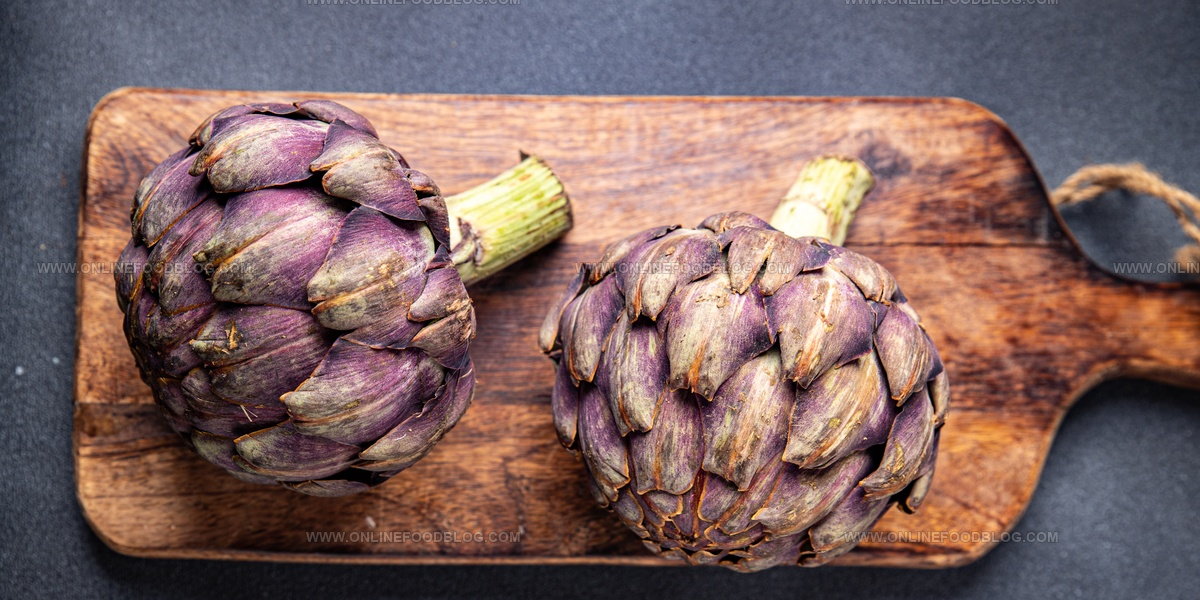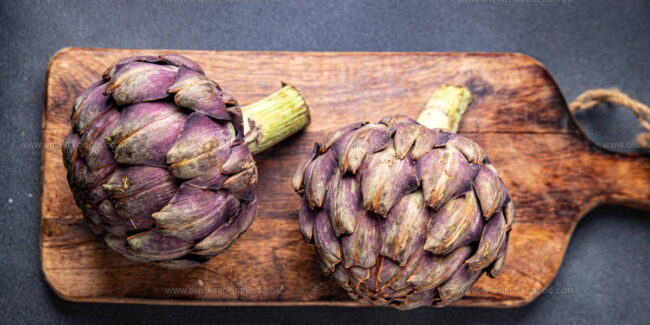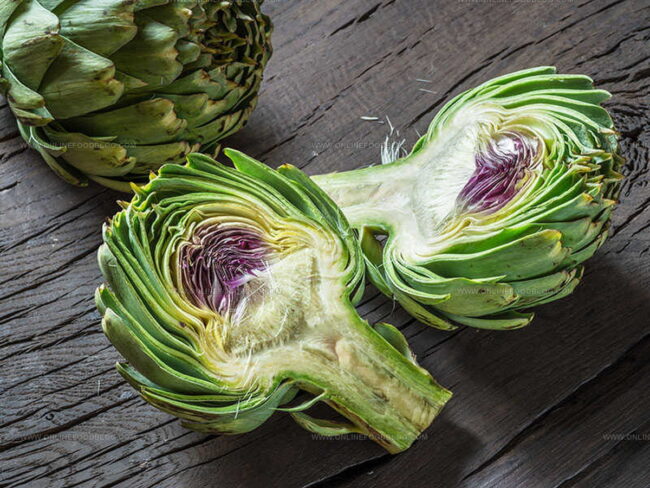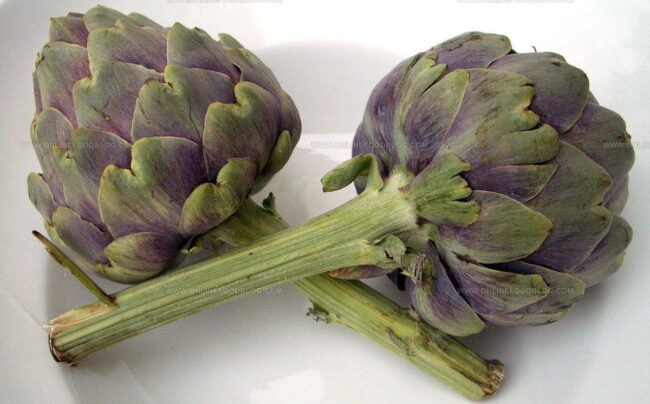What Do Artichokes Taste Like? Uncovering Nature’s Hidden Gem
Artichokes might seem like a mysterious vegetable that puzzles many home cooks and curious food enthusiasts.
These unique green globes have intrigued culinary lovers for generations with their complex appearance and unusual structure.
Some people find artichokes intimidating because they look nothing like typical vegetables found in everyday salads or side dishes.
Their layered, armor-like exterior can make anyone wonder about the potential flavors hidden within these fascinating plants.
Navigating the world of artichokes requires understanding their subtle nuances and preparing them with care.
Culinary adventurers who dare to venture beyond their comfort zone will uncover a delightful gastronomic experience waiting to be savored.
Your taste buds are in for a remarkable journey through this extraordinary vegetable's delectable landscape.
What Artichokes Are
Greek stories tell of Zeus creating the artichoke.
His anger toward a goddess turned her into this spiky vegetable when he banished her from Olympus.
Spotting an artichoke might seem tricky if you know its name but not its look.
These vegetables are green and shaped like pine cones.
Fully grown artichokes match an adult hand in size with leaves that overlap like a cabbage sprout.
Delicious parts come from unopened flower petals that look similar to large hops.
Mediterranean regions first grew these plants back in the eighth century BC.
Italian cooking embraced artichokes, which Dutch traders later brought to England and spread across different countries.
French and Spanish settlers moved them to Louisiana and California during the 19th century.
California produces most artichokes eaten in the United States, with some varieties sporting purple petals.
The Taste of Artichokes
Artichokes lack a strong taste profile but showcase subtle flavor variations.
Artichoke flavor carries earthy notes with herbal undertones.
Each artichoke contains a center section with deeper, more intense flavor compared to its outer petals, which offer a crisp bite.
Hearts remain the most prized section, frequently sold as a separate delicacy.
Raw artichokes maintain a tough texture and bitter taste.
Cooking softens and melds their flavors, resulting in a texture similar to boiled potatoes.
Enjoyment of artichokes depends on individual taste preferences.
Their mild nutty flavor resembles brussels sprouts and asparagus.
Some compare their texture and taste to celery and celeriac.
Certain artichoke types also share similarities with turnip flavors.
Artichokes blend well with many dishes since their taste remains mild and adaptable.
Different cooking methods enhance their natural characteristics without overwhelming other ingredients.
Regional Artichoke Varieties and Their Flavors
Globe artichokes are the most common variety, valued for their tender leaves and mild, nutty flavor.
Baby artichokes are smaller, more delicate, and sweeter, as they’re picked at an early stage.
Purple types, like those from Italy or France, bring a gentle earthiness, light sweetness, and vibrant color to the plate.
Spined artichokes from Spain or the Mediterranean have a stronger taste with a grassy sharpness.
Regional differences also influence flavor, ranging from pleasantly bitter to rich and buttery.
Tips for Picking Artichokes
Shoppers should look for artichokes with compact, green outer leaves.
Select artichokes without marks or damage on their surface.
Squeeze the leaves between your fingers to check freshness.
Fresh artichokes make a distinct squeaking sound when pressed.
Wormholes near the stem can damage the heart's taste, so scan carefully for any signs of insects.
Keeping artichokes in good condition requires waiting to cut the stem until right before cooking.
Health Benefits of Eating Artichokes
Artichokes bring amazing health perks that can help you feel better:
Packed With Magnesium
Magnesium fills medium-sized artichokes (128 grams), offering up to 77 mg in each serving.
This mineral plays a key role throughout your body.
Magnesium might not receive as much attention as calcium, but scientists recognize its critical importance in more than 600 bodily functions.
Research shows many Americans lack enough of this essential mineral.
High In Fiber
Dietary fiber offers incredible health benefits.
Fiber helps move food through your gut smoothly, stopping problems like constipation and diarrhea.
Your body also enjoys steady blood sugar levels when you eat enough fiber.
Consider this fact: one medium artichoke contains 6.9 grams of fiber, which meets 25% of your daily needs.
Supports Bone And Mind Health
Vitamin K, a fat-soluble vitamin stored in body fat, recently sparked interest due to its benefits for brain and nerve health.
Scientists recognize this nutrient's crucial support for bone wellness when working alongside vitamin D.
Small artichokes pack a powerful nutritional punch with 18.9 micrograms of vitamin K per serving, which covers 14 percent of daily recommended intake.
Eating these green veggies offers an easy way to boost vitamin K levels in your diet.
May Help Prevent Cancer
You might feel shocked by the power of this vegetable.
Cancer patients could find this plant especially helpful.
Researchers have discovered artichoke extract works well against breast cancer cells.
Medical experts suggest adding artichokes to daily meals might provide strong health benefits!
Helps Manage High Blood Pressure
One medium artichoke delivers 473 milligrams of potassium, which covers about 10% of daily needs.
Potassium ranks as the third most common mineral in our bodies.
This important mineral works to balance sodium levels and potentially reduce blood pressure.
Artichokes contain specific compounds that could support healthy blood pressure management.
Main Uses for Artichokes
You might wonder about artichoke benefits.
No stress; artichokes work well in many tasty meals or solo.
Artichokes cook easily through steaming, boiling, stir-frying, grilling, and roasting. Diners enjoy each section with dips, seasonings, or as complete meals.
Delicious artichoke options include:
How to Grow Artichokes
Growing artichokes in your garden takes some careful planning.
Here are key points to keep in mind:
Soil Quality
Start growing healthy artichokes by placing them in rich, well-packed earth loaded with good nutrients.
Good soil helps plants develop strong roots and produce plenty of tasty vegetables.
Healthy Plant Growth
Look for strong, healthy artichoke plants when shopping.
Choose plants from trustworthy garden centers.
Watch out for any signs of weak or unhealthy growth, like leaves that look dried out or have strange colors.
Spacing Plants Correctly
Artichoke plants need good spacing when planting.
Space rows 2 to 3 feet apart for best growth.
Each plant should sit about 18 inches from its neighbors within the rows.
Proper spacing helps plants spread out and grow strong without crowding each other.
Giving plants room allows roots to stretch and leaves to expand freely.
Caring For Plants
Water artichoke plants using drip irrigation for best results.
Spread mulch around plant bases to keep soil moist and stop weeds from growing.
Maintaining consistent dampness is crucial for artichoke health.
Soil should remain wet but not waterlogged, ensuring these plants receive steady moisture throughout their growing season.
Proper Fertilizer And Watering
Artichoke plants demand specific nutrients for successful growth.
Gardeners should spread roughly 2 tablespoons of nitrogen-based fertilizer around each plant approximately every 4 weeks.
Spreading the fertilizer along plant sides helps ensure balanced nutrition.
Carefully tending these plants brings satisfaction from seed to harvest.
Watching artichokes develop becomes a delightful experience that connects garden work with delicious meals.
Gardens sparkle with green promise as these plants mature and produce their unique edible flowers.
How to Cook and Serve Artichokes
Raw artichokes offer maximum nutritional benefits, packed with antioxidants, vitamins, and minerals. Soft and light-tasting, these vegetables work perfectly in salads or steamed dishes.
Steaming helps preserve their flavor while keeping calorie count low.
Cooking requires careful attention to maintain nutritional value.
Overcooking can destroy important nutrients, so gentle preparation matters most.
Artichoke flavor stands unique in vegetable world.
Chefs recommend boiling them in water with olive oil and a lemon slice. Proper cooking method involves placing artichokes stem-side down in a pot.
Thirty to forty minutes of cooking creates fork-tender stems with delightful taste.
Oven cooking works well for quick preparation.
Freshness matters most, so consuming within 24 hours ensures best flavor. These versatile vegetables mix nicely into:
Texture similarities connect artichokes to asparagus and celery.
Mild flavor makes them adaptable to many dishes. When selecting artichokes, look for:
Serving options include raw preparations or adding butter and mayonnaise.
Boiling and frying work equally well for creating delicious side dishes or ingredient additions.





Mia Reynolds
Food Writer & Home Cooking Specialist
Expertise
Easy Home Baking, Recipe Writing and Storytelling, Local and Seasonal Ingredients, Baking for Beginners
Education
New England Culinary Institute (NECI), Montpelier, Vermont
Community College of Vermont, Winooski, Vermont
Mia Reynolds fell in love with baking as a teenager experimenting in her family kitchen. Her passion took her to New England Culinary Institute, where she learned practical pastry techniques, and later to Community College of Vermont to deepen her understanding of food management.
Mia combines clear, simple baking instructions with heartwarming stories, making home baking approachable for everyone.